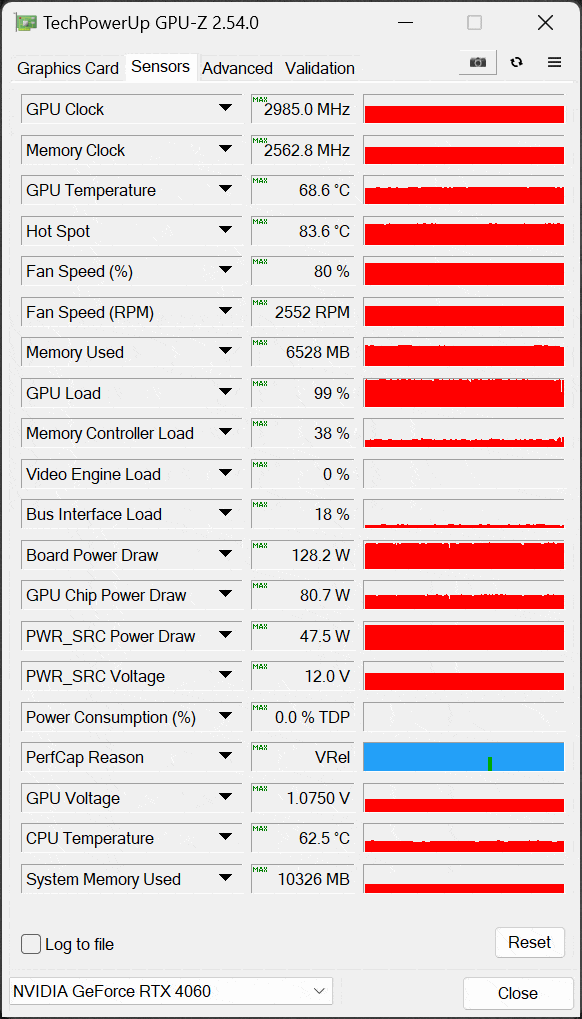Overclocking ZOTAC GAMING GeForce RTX 4060 8GB Twin Edge OC White Edition
To overclock the ZOTAC GAMING GeForce RTX 4060 8GB Twin Edge OC White Edition video card we are going to use ZOTAC’s GAMING FireStorm utility. The version present on the website (4.0.00.012E) does not currently work with the new GeForce RTX 4060 GPU. We reached out to ZOTAC and they sent us a beta version 4.0.0.013E which did work perfectly. The new version should come to the website soon for this new video card.
With NVIDIA GPUs, the GPU frequency is dynamic. NVIDIA has GPU Boost. Typically, GPUs today can exceed the Boost Clock dynamically. The ZOTAC GAMING GeForce RTX 4060 8GB Twin Edge OC White Edition has a Boost Clock set at 2490MHz, but we fully expect it to actually run higher. Below we will show you our highest stable overclock, and then a GPU frequency graph to compare GPU frequency at default and overclocked. In addition, we have an additional clock speed we achieved by raising the voltage, to show you as an alternative. To test this we use Cyberpunk 2077 for this with a very long manual run-through at “Ultra” settings recording GPU-Z sensor data.
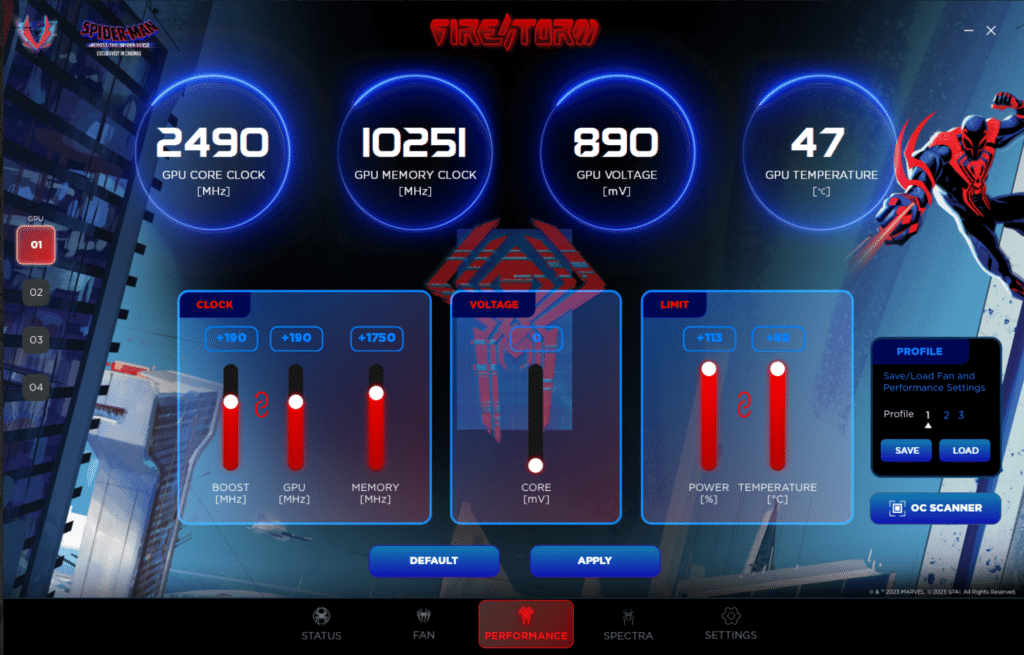
Opening the FireStorm Utility we found that we could increase the Power Target by 13% from the default of 100 up to 113. This is a lower allowable power limit than we found compared to the ASUS DUAL RTX 4060 OC which allowed a 20% increase in the power limit. We also had the ability to increase the GPU Voltage, which we did try.
We ended up getting a slightly higher GPU clock speed with a voltage increase, the problem was the temperatures were hotter and the board power went up exceeding the allowable power limit when we did so. While we could achieve a higher GPU clock speed, it eventually ended up downclocking due to going over the TDP. However, we will show our alternate overclock below so you can see the absolute max we were able to push the GPU. We could also manage the fan speeds with this utility, which is great. We ended up setting the fans to 80% just to be sure we weren’t being held back thermally. At 80% fan speed the fans were not annoying.
Our final overclock ended up being a GPU Boost Clock set at +190 or 2680MHz Boost Clock compared to 2490MHz at default, for the boost clock. To see what that actually means while gaming, look at the graph below. But what we experienced is that we were able to hit up to 2970MHz at maximum with this setting, and then it would settle down to around 2955MHz after long gameplay. We were not successfully able to hit 3GHz without adding voltage. Even with voltage, it was short-lived at 3GHz, with crashing very early on. We did get an overclock with more voltage, but that only ended up being about 2985MHz as we will show below.
The memory did overclock well. The default was 17GHz, but we managed to push it up to 20.5GHz just fine. In fact, we could get it higher, but again what would happen was that the power budget just wasn’t there with the smaller 13% TDP power limit, and we hit that TDP wall early on. Backing down from ultimately might have been a 21GHz memory overclock back to 20.5GHz brought back some of that power we needed to keep the core GPU clock higher. Still, 20.5GHz is impressive, and with this overclock bandwidth increased to 328GB/s from the default of 272GB/s.
Overclocked GPU Frequency
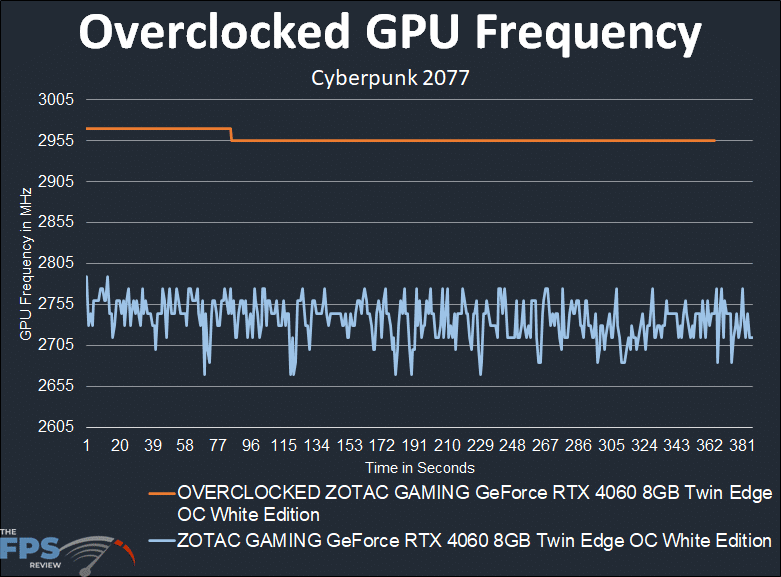
As we know, the ZOTAC GAMING GeForce RTX 4060 8GB Twin Edge OC White Edition has a default boost clock of 2490MHz. At default (the blue line) you can see that it hovers between 2705MHz-2755MHz mainly while gaming. The average was 2738MHz while gaming. That means out of the box it is giving us a 10% boost just doing nothing. That is our starting place then, for overclocking.
With the overclocking applied as we showed above at +190 set boost clock, the actual boost frequency while gaming starts off at 2970MHz and then settles in at 2955MHz for a solid consistent frequency. That means compared to the default clock speed of 2738MHz our overclock at 2955MHz is an 8% overclock over the default.
Therefore, our final overclock was 2955MHz/20.5GHz (Core/Mem).
Overclock with Voltage
As we mentioned above, we do have a “max GPU clock” we achieved by adding more voltage, which this video card supports with the ZOTAC GAMING FireStorm Utility. The drawback is the small allowable 13% power limit increase. Therefore, by setting the voltage to +50 we managed a decent voltage bump, and you can see what this resulted in below.
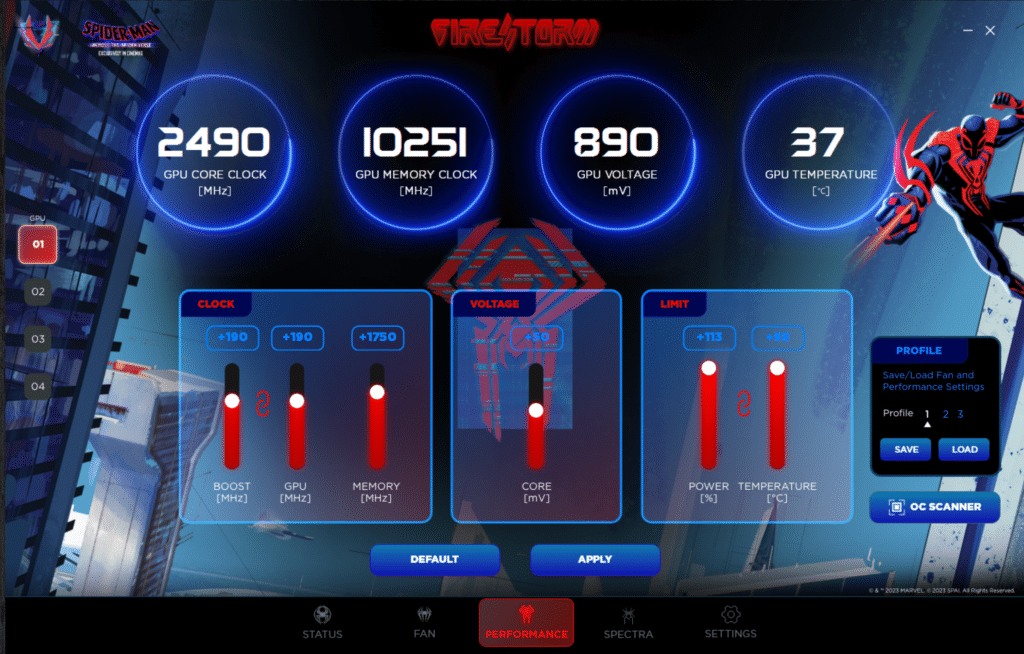
Even with this small voltage bump, we were able to leave the GPU clock at +190 and the frequency did go up while gaming as you can see in GPU-Z below. We managed to hit 2985MHz as our maximum possible overclock. The voltage was at 1.0750V versus the default 1.0650V. The issues were that this was not entirely stable for long periods of gaming, plus it would eventually downclock over long sessions of gaming back down to the 2070 to 2050MHz level anyway. So since we really didn’t get any higher over long periods of time than we could without voltage, it was best to just leave the voltage alone in this case. We just wanted to show you that even with voltage, we were not able to hit 3GHz stably on this particular video card.
ZOTAC GAMING FireStorm Utility
ZOTAC has its own utility called FireStorm to access functions of the ZOTAC GAMING GeForce RTX 4060 8GB Twin Edge OC White Edition video card.
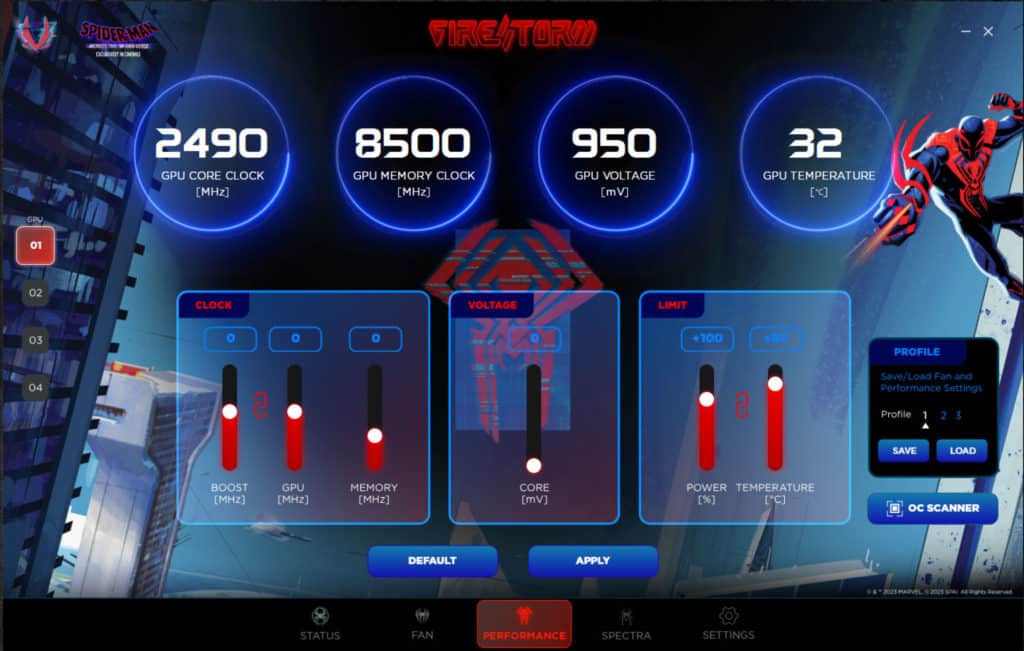
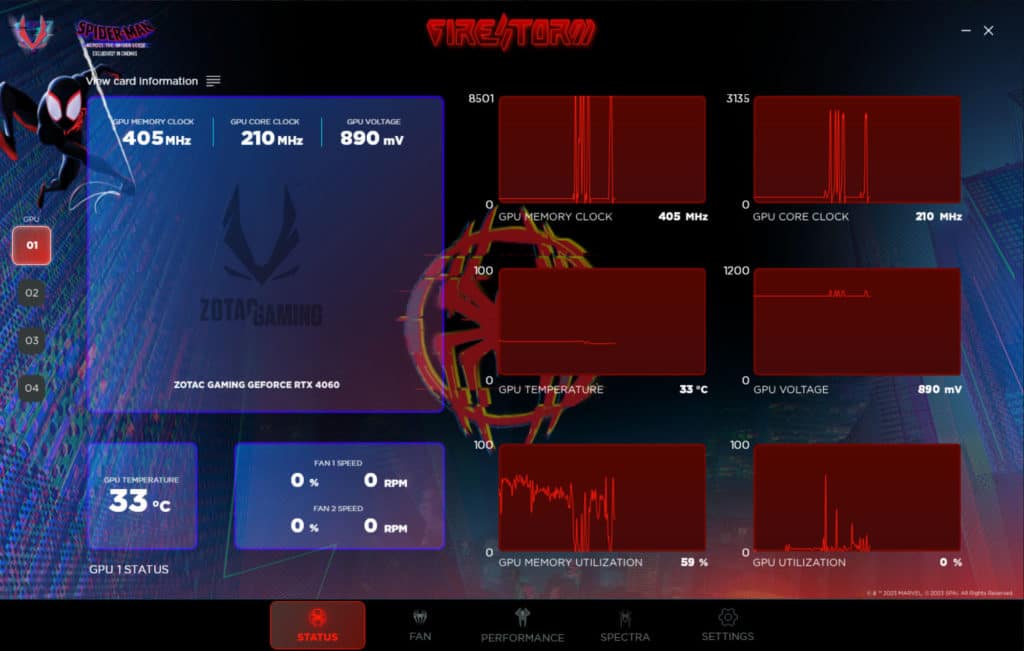
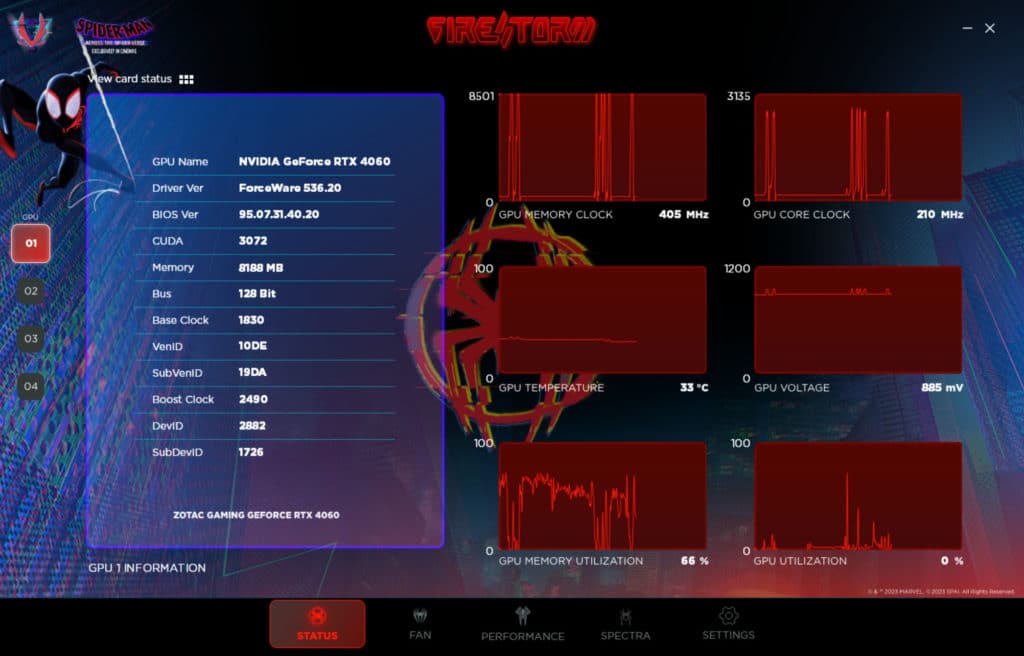

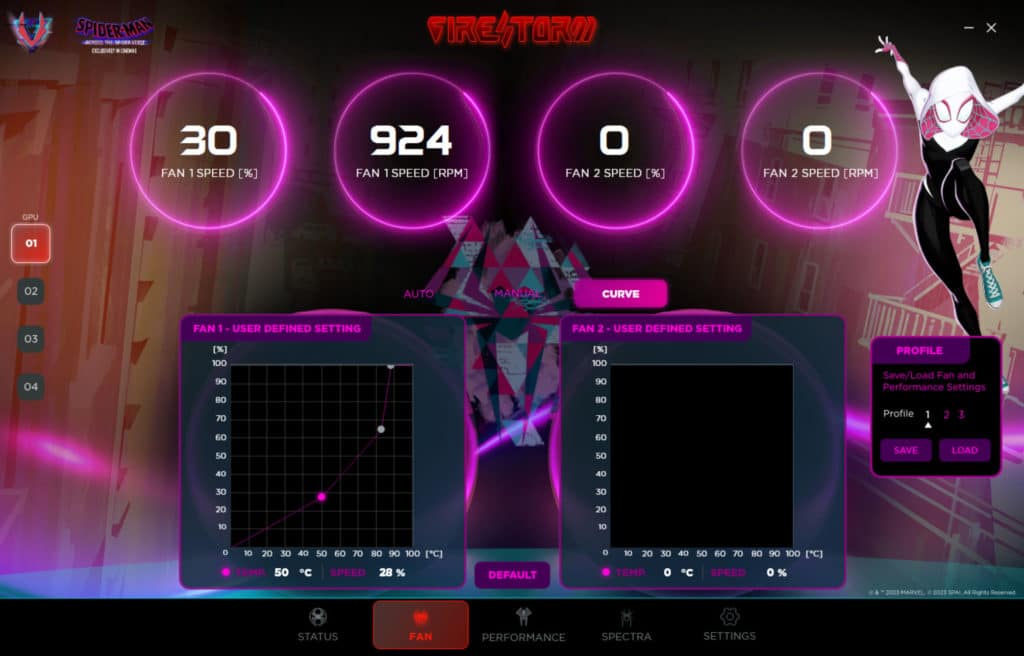
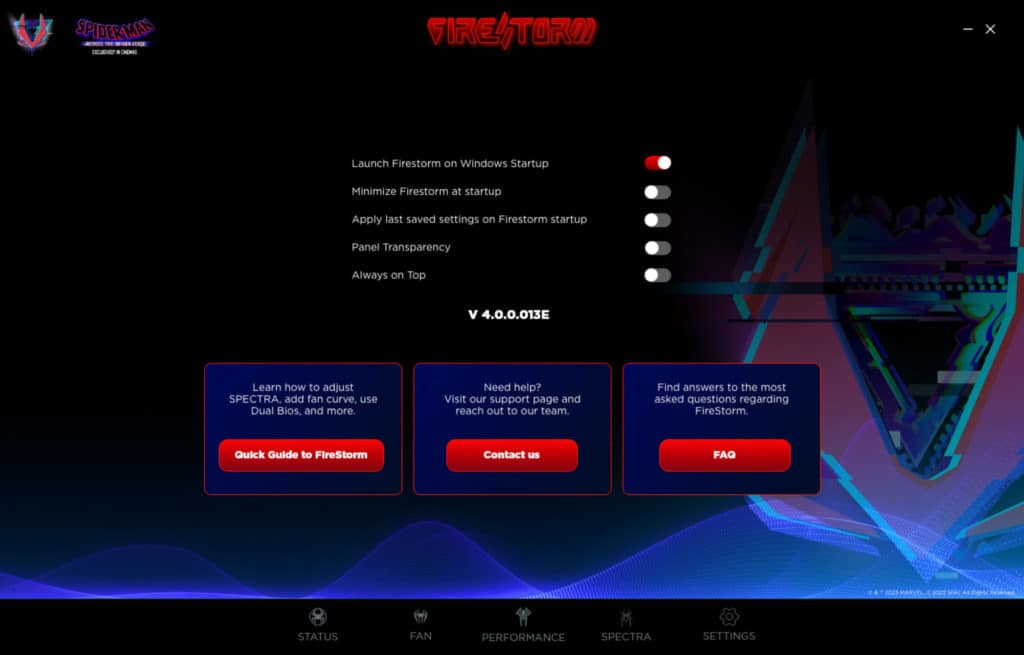
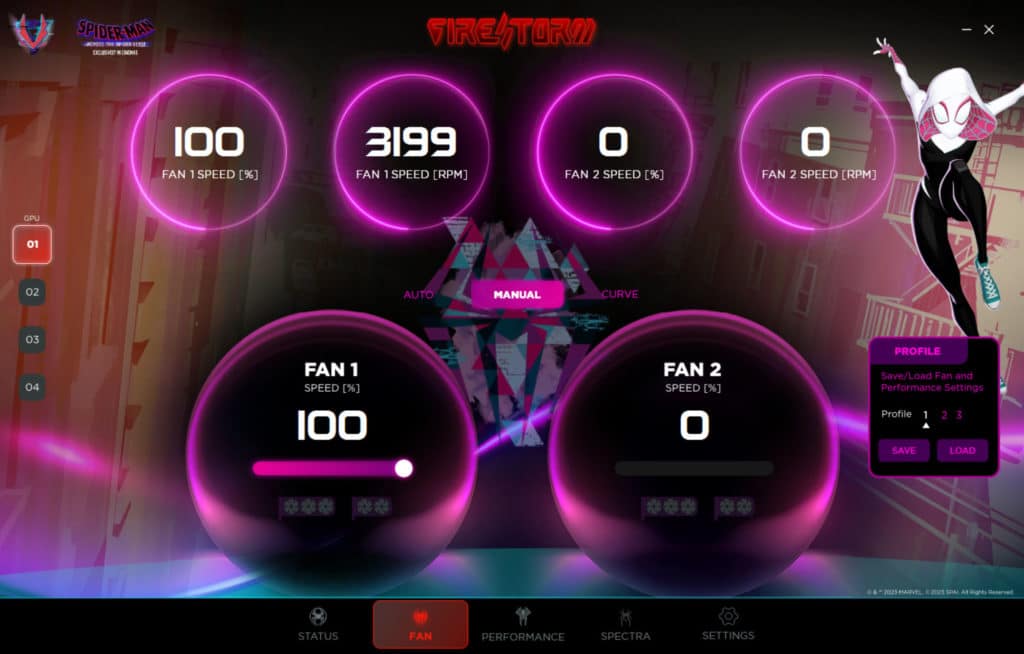
In the Performance tab, you can control overclocking features such as clock speed, and independently adjust the boost and GPU clock, as well as memory. You can also adjust the voltage and power and temperature limits. The utility lets you set profiles and save profiles for overclock settings. There is a status tab that allows you to monitor hardware stats such as GUP clock and memory clock, GPU temperature and voltage, GPU memory utilization and GPU utilization as well as fan speeds. The fan menu lets you independently control the fans and set them to automatic, or manual settings or you can set a fan curve. There is also a Spectra menu to change RGB settings if present, which this video card does not have options for.

